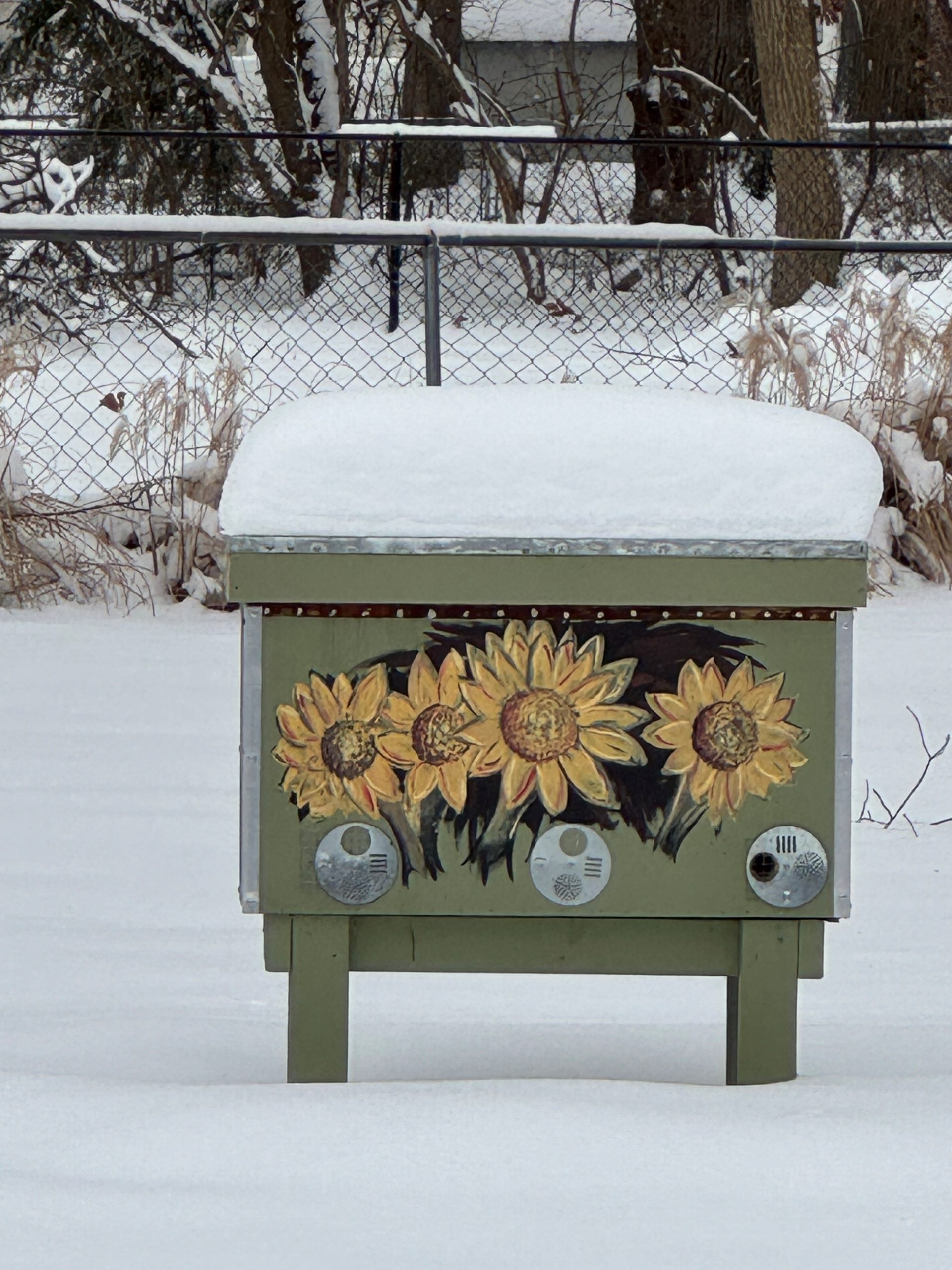2024-2025 Survey of Layens Hive Winter Losses
- Posted
Abstract
In reaction to the reports of significant commercial colony losses of between 60-70% during the fall and winter of 2024-2025 Wild Hives, serving backyard beekeepers and those using the Layens hive style, decided to conduct a grassroots survey of interested Layens beekeepers to see what losses they experienced during this same timeframe and what winter management practices they used. Facebook posts and community pages were the primary methods for distributing the survey.
Responses represent 25 states, 64 beekeepers, and 397 Layens colonies going into winter with 295 reported still alive in March of 2025. This represents a 26% loss rate while over the past 6 years commercial losses have reached or exceeded 40% annually. 41 of the respondents did not feed or treat their colonies, representing 88 of the 102 reported losses. Most respondents reported that colony size or late summer swarm collection were reasons for losses. Respondents insulated their hives which is an integral aspect of the Layens hive style. Colony condition was rated going into winter as being good to excellent with an average reported frame size of 10. This would be equal to overwintering a strong colony in a double deep insulated Langstroth hive. The survey results may point to going into winter with a strong colony and a fully insulated hive (R-7<) with increased lid insulation as critical reasons for Layens colony overwintering success.
A second survey is planned during the month of May 2025 to collect data on Layens beekeepers honey bee sources and details about their apiary and foraging conditions. This data will be compared to the overwintering data to see if locally adapted honey bees are also a contributing fact in the Layens communities lower than average national colony loss rate. If so, more attention should be paid to studying hive styles that mimic tree cavity thermodynamics and the honey bee genetic diversity of wild and feral local stock. Its currently Wild Hives plan to annually repeat these surveys to establish a foundation of data for the Layens community in support of their management decision processes.
All collected data is openly available to the Layens community upon request ([email protected]).
National Stats
- The USDA reports that there were approximately 115, 000 to 125, 000 active beekeepers in the US, with an estimated 2.71 million honey-producing colonies in 2020. Collectively, hobbyists oversee ~314,360 colonies, which represents a fraction of the nation’s 2.70 million managed honey-producing colonies.
- Less than 2% (~2,500-3,000) of beekeepers are full-time commercial operators employing ~19,147 people and managing ~2,385,640 honey-producing colonies.
- The beekeeping industry has seen growth, with 17,036 beekeeper service businesses operating in the field as of 2024, reflecting a compound annual growth rate of 1% from 2019 to 2024.
- The general age of all beekeepers averages around 60 years while the average commercial beekeeper currently is over 60, raising questions about the lower engagement levels from younger generations
- The gender distribution indicates 21% of beekeepers are female.
- While younger families are becoming involved, the demographic challenge persists as the future growth of the beekeeping community relies on more youth participation.
https://blog.entomologist.net/what-is-the-number-of-commercial-beekeepers-in-the-united-states.html
Losses Leading Up to 2024
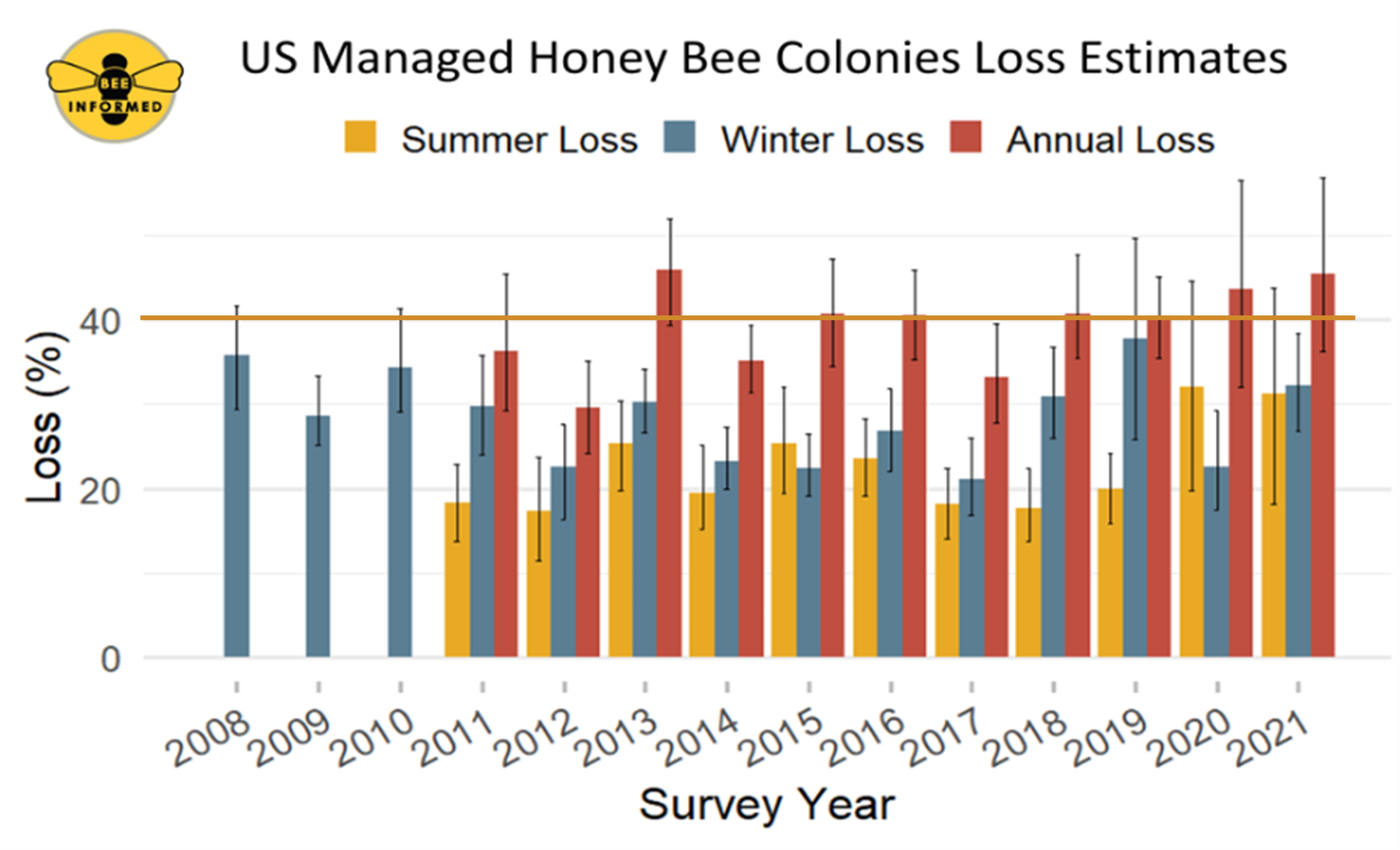
Based on national survey data, we see annual losses reaching or exceeding 40% since 2018. This growing loss rate indicates that beekeepers are still working to understand and address a multitude of possible issues for their bees and that current solutions are not sustainable.
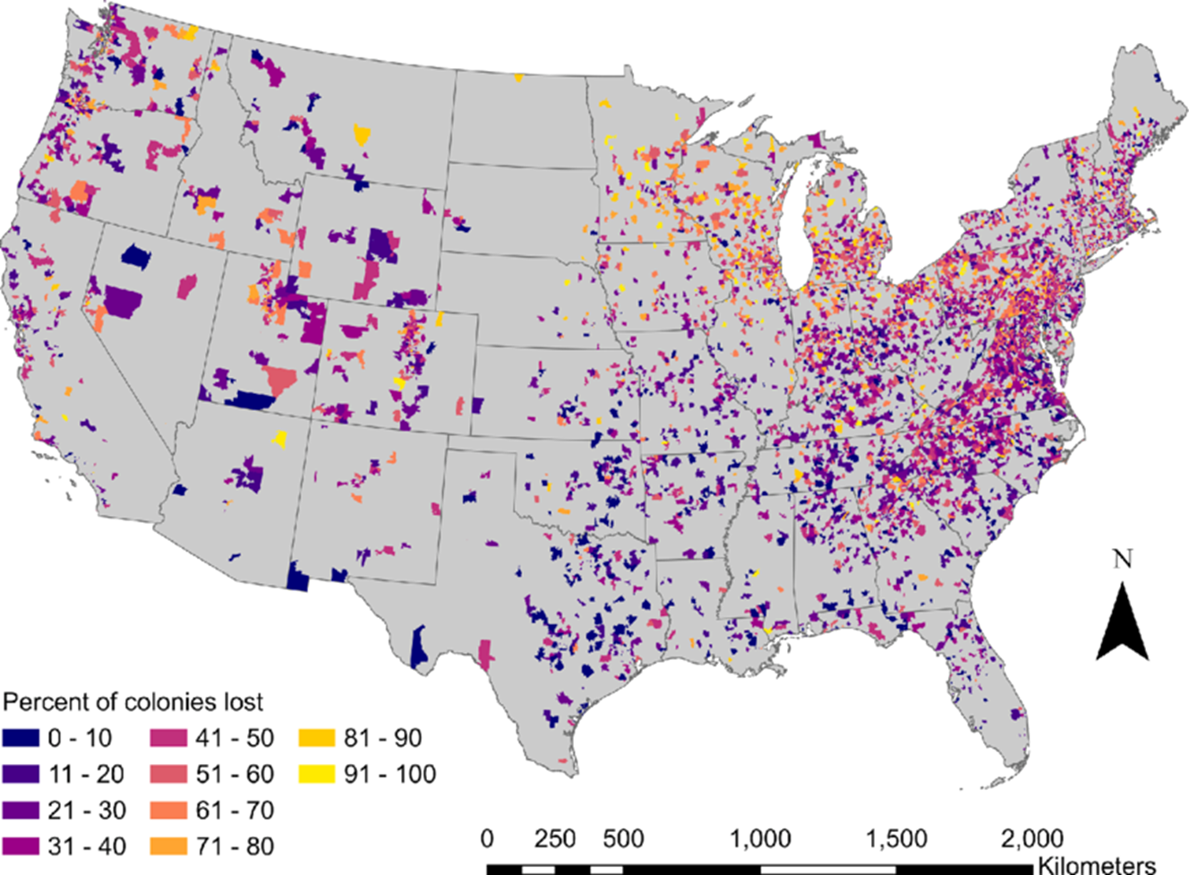
As expected, we have seen greater losses in the northern states over the years. (Winter weather predicts honey bee colony loss at the national scale https://www.sciencedirect.com/science/article/pii/S1470160X22011827)
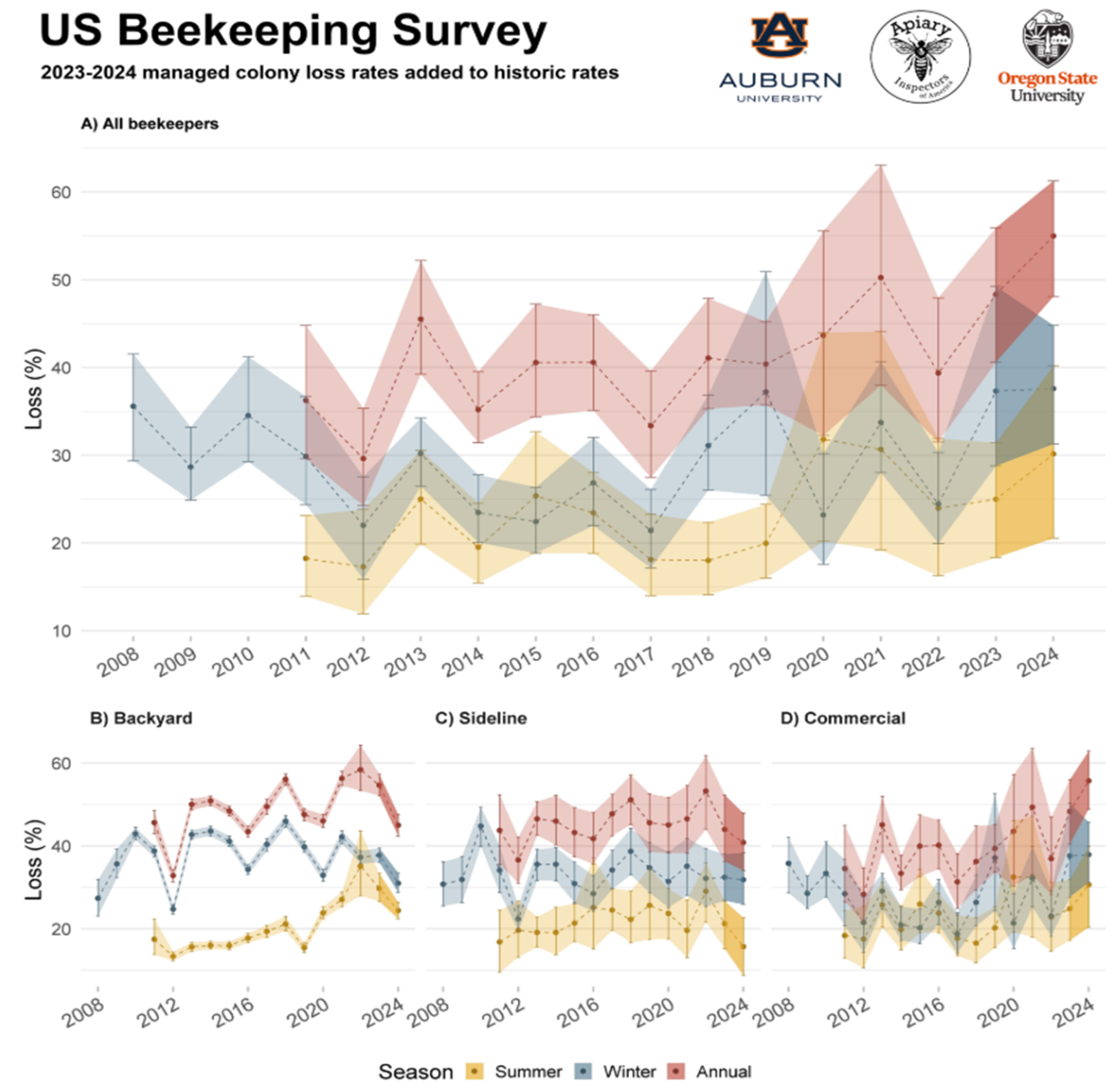
Preliminary Results from the 2023-2024 US Beekeeping Survey: Colony Loss and Management. The above results are collected by the Apiary Inspectors of America: https://apiaryinspectors.org/US-beekeeping-survey-23-24 (The 2024-2025 US Beekeeping Survey is Now Open: https://apiaryinspectors.org/US-beekeeping-survey-24-25)
Winter of 2024-2025 Losses – Project Apis m. Survey
Feb. 20, 2025—A nationwide survey of beekeepers has revealed catastrophic honey bee colony losses across the United States, with commercial operations reporting an average loss of 62% between June 2024 and February 2025.
Administered by Project Apis m., the survey gathered data from 702 beekeepers, covering colony losses, management practices, and potential contributing factors. It is estimated that survey participants account for over 1.835 million colonies, approximately 68% of the nation’s bees. Findings from the survey indicate:
- 320 Hobbyist beekeepers (1-49 colonies) lost an average of 50% of their colonies.
- 152 Sideliner operations (50-500 colonies) lost an average of 54% of their colonies.
- 267 Commercial beekeepers (more than 500 colonies) lost an average of 62%—a reversal of typical trends, where commercial beekeepers generally experience lower losses due to their scale and resources.

The losses between June 2024 and February 2025 translate to an estimated 1,123,959 colony losses among respondents, resulting in the following immediate economic losses:
- Direct colony losses: Conservatively estimated at $224.8 million (based on a $200 per colony replacement cost, not including labor, feed or treatments).
- Economic impact: Factoring in lost almond pollination income based on the survey results, which was estimated at $181 per colony in 2023, the lost income exceeds $428 million. The loss rate to US colonies that were not accounted for in the survey is estimated at an additional $206.4 million in losses, which could equal a total estimated economic loss of $634.7 million.
- Additional economic impacts not included in this figure include the loss of honey production and pollination contracts for any crops following almonds. This scale of loss could have significant repercussions for pollination businesses and the security of pollination-dependent crops, leading to increasing costs and threatening food security.
Project Apis m. – https://www.projectapism.org/colony-loss-information
Honeybee Health Coalition – https://honeybeehealthcoalition.org/survey-reveals-over-1-1-million-honey-bee-colonies-lost-raising-alarm-for-pollination-and-agriculture/
Layens Winter Losses Survey
Why do a Layens hive winter loss survey?
- No national survey data on this type of hive. New and unique to the US (Millions in Spain).
- No seasonal data to help Layens beekeepers with their management choices.
- No national data comparing the success/failure of natural (no feed/no treat) methods on loss rate.
- Lack of national data comparing the effect on loss rate of insulted hives.
Who might be using a Layens hive?
- Greatly energized by the work of Dr Leo Sharashkin through his presentations and free DIY instructions.
- COVID and the return to backyard gardening during that period also encouraged people to consider beekeeping.
- This increased focus on nature also caused more attention to “no feed/no treat” options especially in the face of increased treatments for Varroa. A possible reaction to the “must treat” information.
- Many recent studies and groups in Europe are calling greater attention to local bees and wild/feral colonies trying to understand how they are surviving around the globe.
- The aging population of beekeepers are looking for easier “no lift” options.
- New and younger people entering beekeeping are coming in without training methods from the last 50 years and are more willing to try something new.
General Results
- 64 surveys summitted from 25 states. Given the smaller community size of this hive style the number of states reporting gives this data a broad environment and temperature range.
- Survey results represent 397 colonies going into the winter of 2024 and 295 remaining in March of 2025. The difference of 102 losses. Over half of the submissions reported no losses at all.
- This is an average loss rate of 26%. Well within acceptable levels of managed colonies and better than expected from wild swarming (50% losses) Mark L. Winston (1987) The Biology of the Honey Bee. Harvard University Press. (https://amzn.to/3R8GYaM)
- The average hive count was 6.2 hives (42 beekeepers with 6> and 22 beekeepers with 7<).
- 83% of the submissions report that they apply specific winter insulation while those who don’t are generally in more southernly states.
- 80% of the submissions reported that they do not treat and 70% do not feed. 64% don’t do either.
- 81% of the hives were rated as pretty good to excellent with an average frame count of 10.
Layens Losses by State
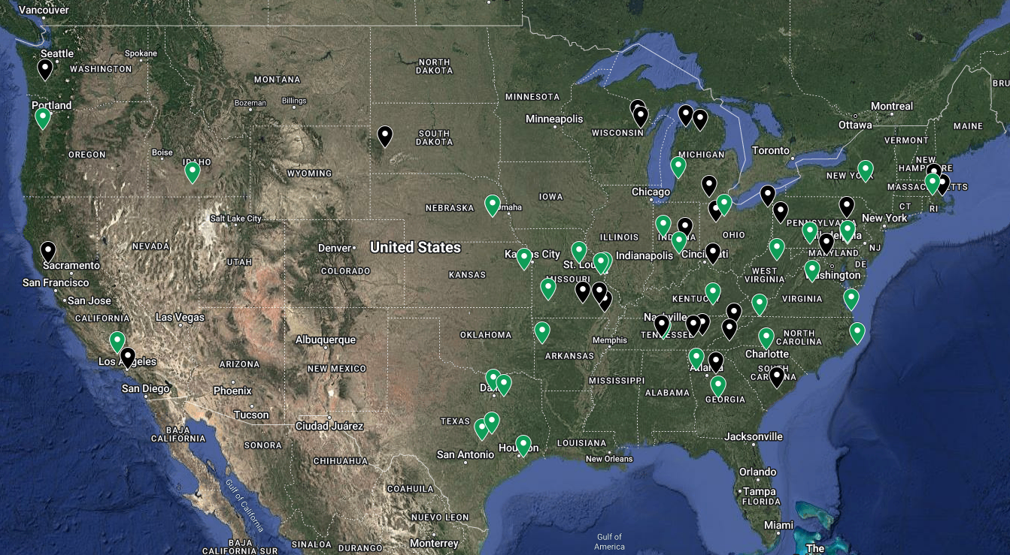
Respondents map – Black icons are those with Winter Colony Losses
- Those states with larger number of hives naturally represent some of the largest losses. Wisconsin, Missouri, and Ohio have our largest numbers.
- Interestingly these states also fall within a 17-39F° average winter temperature (Chart in future slide)
- This year’s strong winter storms could have made a difference, and future data will help determine that.
26% Average Winter Colony Loss
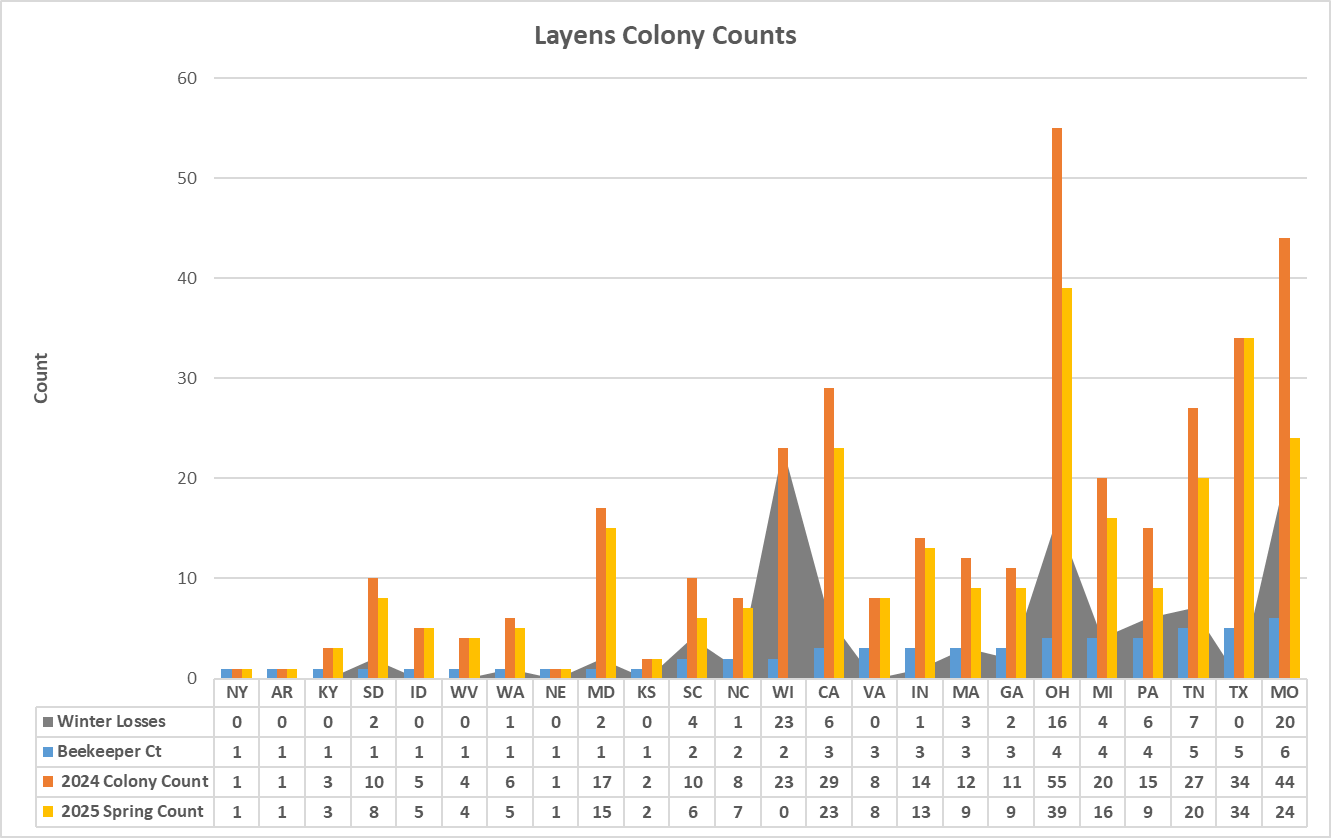
Chart ordered by # beekeepers
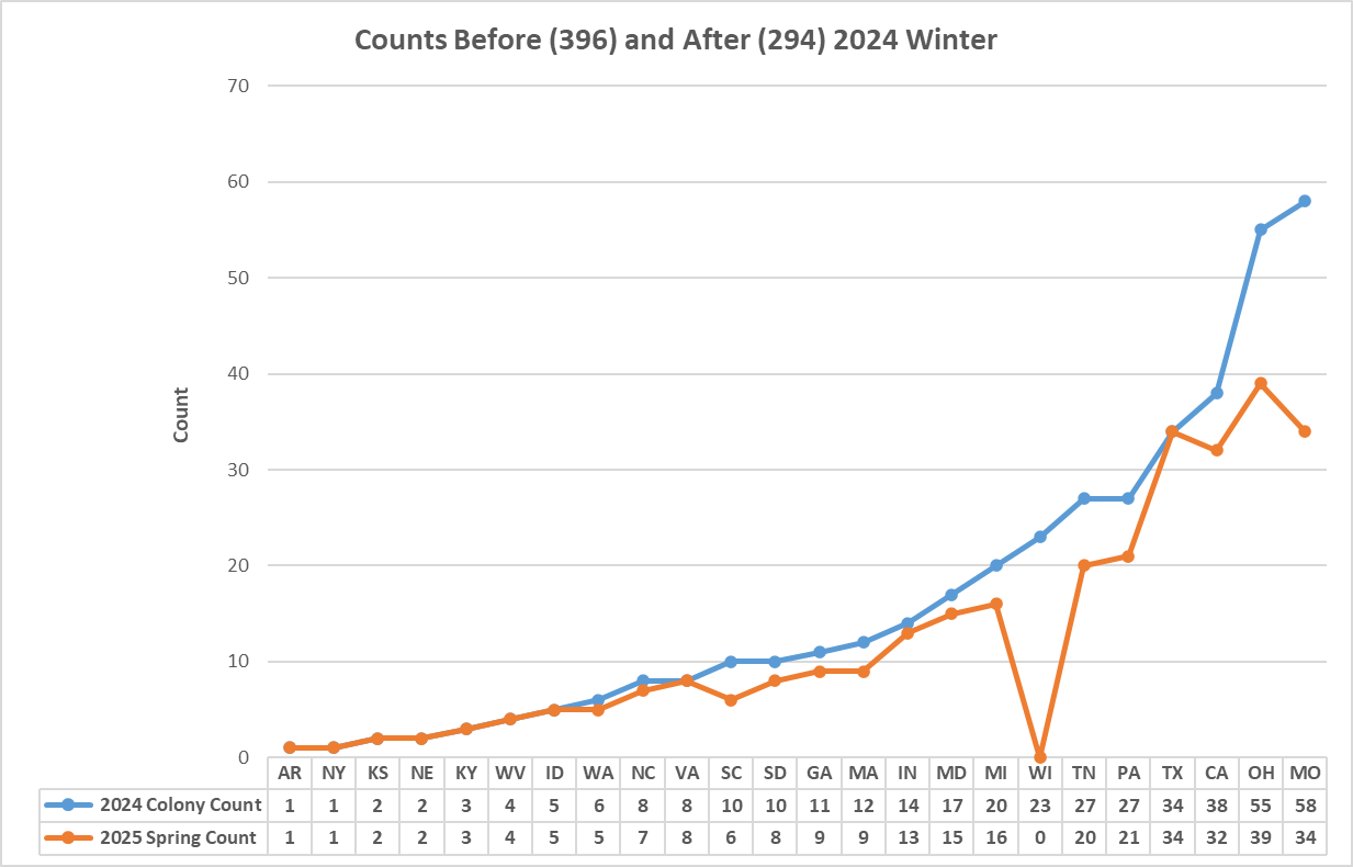
Chart ordered by total 2024 colony count
Losses by latitude
- 31 beekeepers representing 47% of the colonies are located between the 39-46° latitude and lost 48% of the colonies last year.
- The bottom line is that most losses occurred in the upper half of the US where management practices should take extreme cold and regular weather swings into consideration.
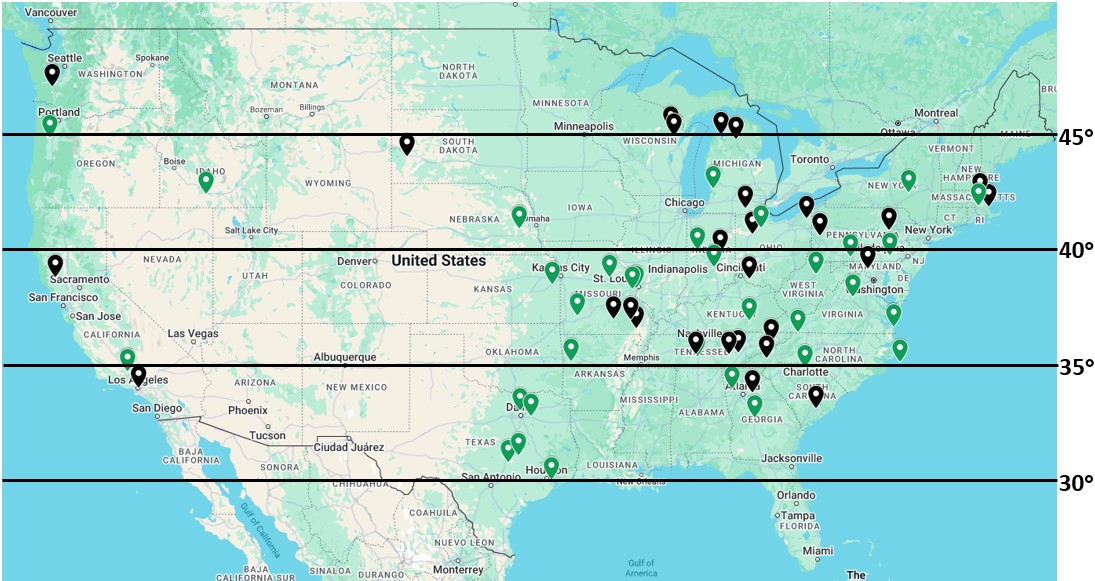
Losses by average winter low temperatures
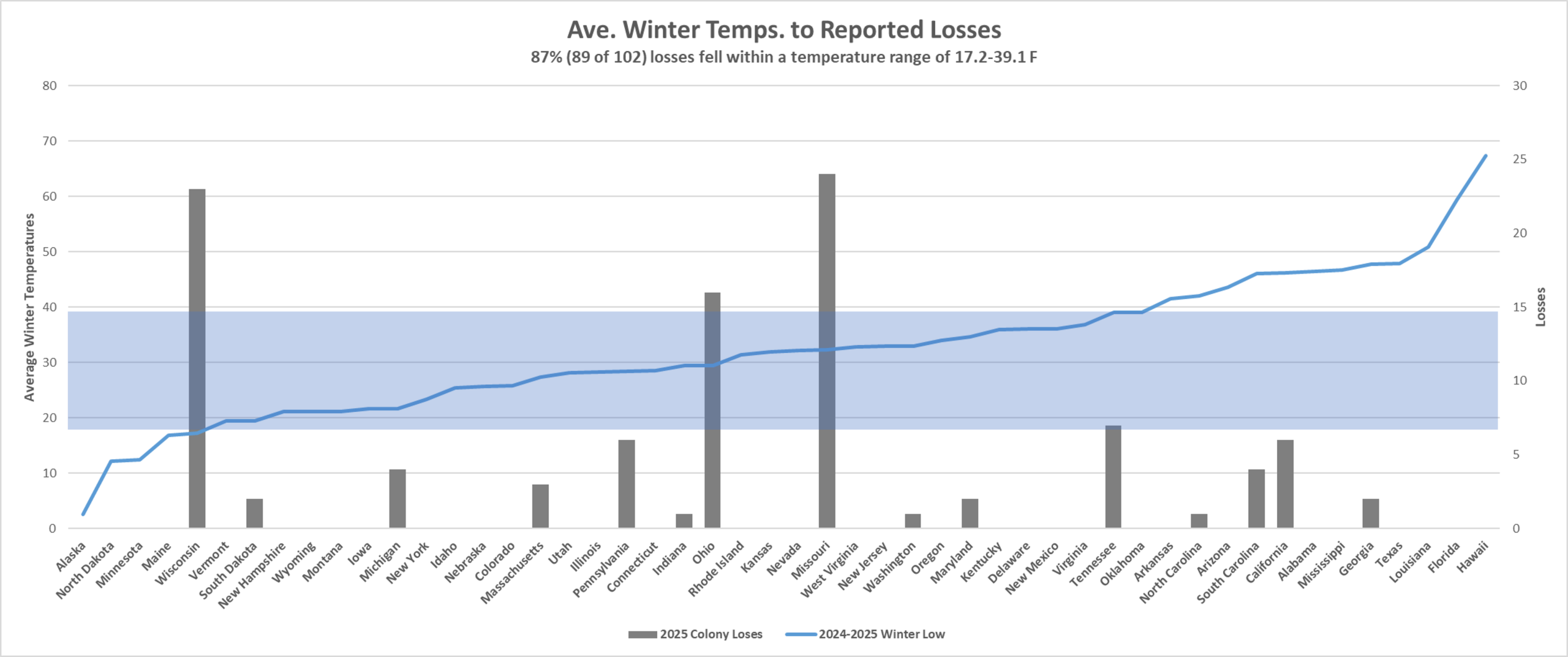
Treating and Feeding Data
80% don’t treat
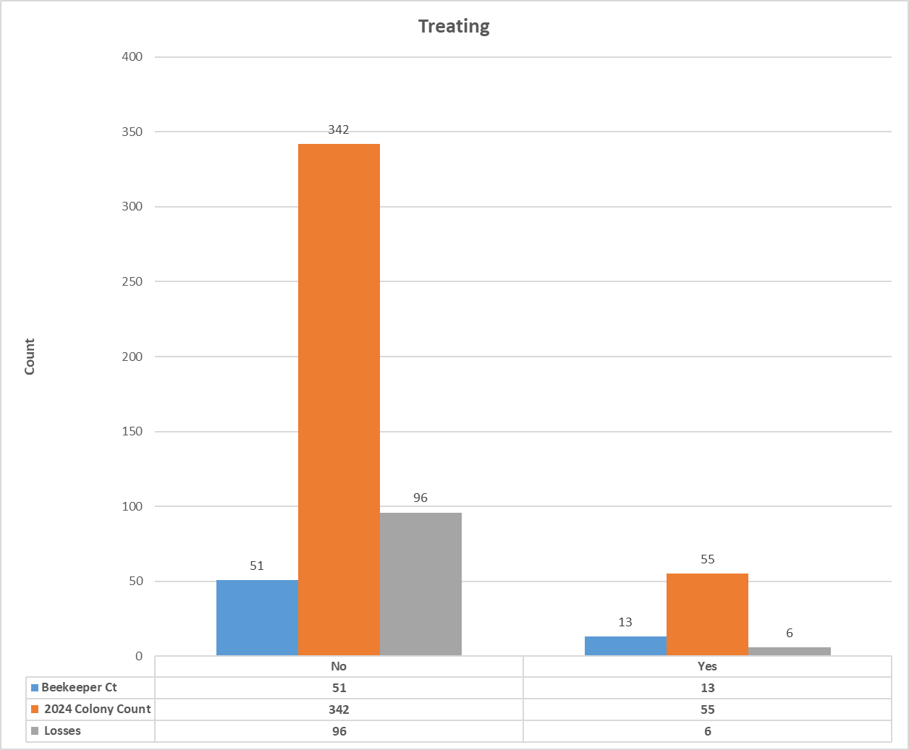
70% don’t feed

86% of all reported losses happened within apiaries that don’t treat or feed.
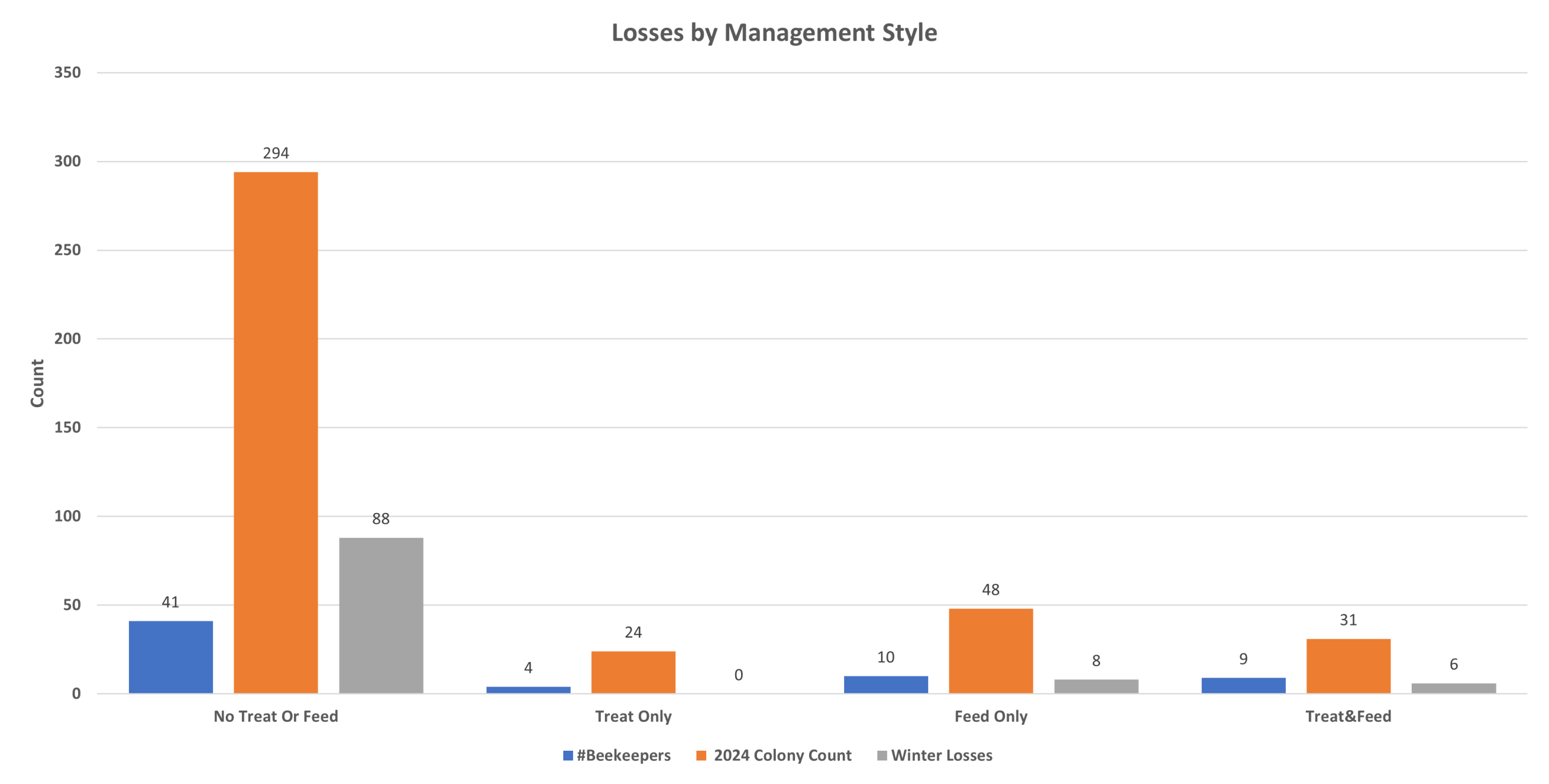
Apiaries With Zero Reported Losses
- 36 (56%) of the 64 beekeepers in 21 states reported zero losses this winter.
- 22 of 36 Beekeepers do not feed or treat their colonies.
- 141 colonies (48%) of the 295 surviving colonies were in apiaries that report no losses
- Of these 91 colonies (31%) of the 295 colonies survived without treatment or feeding
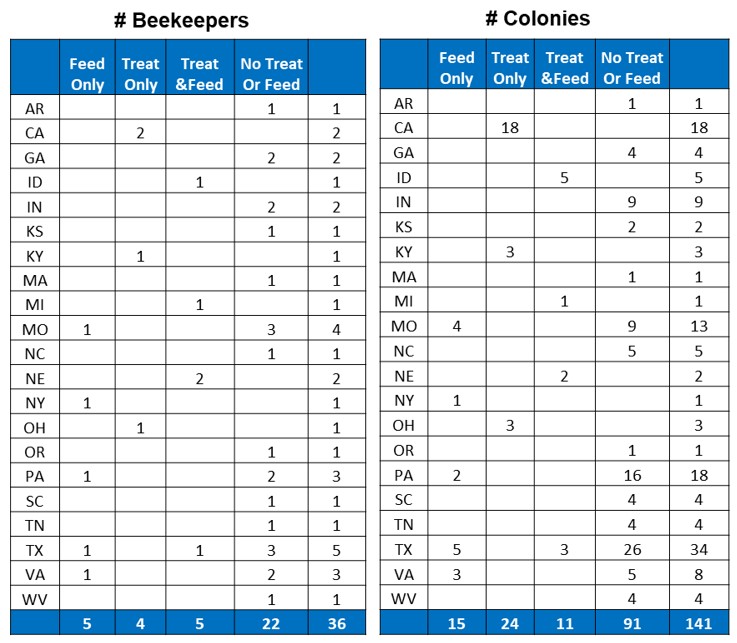
Colony Size and Insulation
Does colony size impact winter losses in a Layens hive? Given the larger number of beekeepers compared to their losses with an average frame count of 10 it would seem to indicate that losses were kept to a minimum when overwintering colonies are larger. This is also indicated by the beekeeper comments that highlighted small colony size as a reason for winter losses. Aggressive combining of small or weak colonies in the fall to bring their frame counts up and colony size up to 10 frames or more could be an effective measure for overwintering.
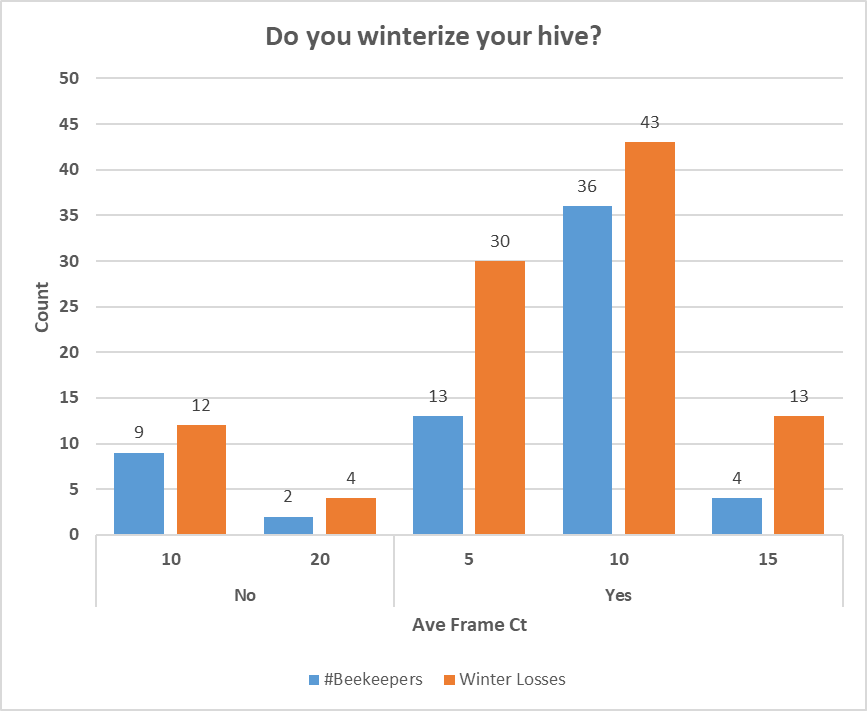
Does Insulation type impact winter losses in a Layens hive? Polystyrene appears to be a popular insulation material whether partnered with lid insulation of the same material or a wool pillow. Based on the hive counts to losses wool and polystyrene seem to be effective winter insulation materials. It does seem that many are moving to an all-polystyrene insulated hive as well as using it in the hive lid. This may be because of the ease of determining the R-value of the insulation when trying to assure using twice the R-value in the lid verses the walls of the hive.
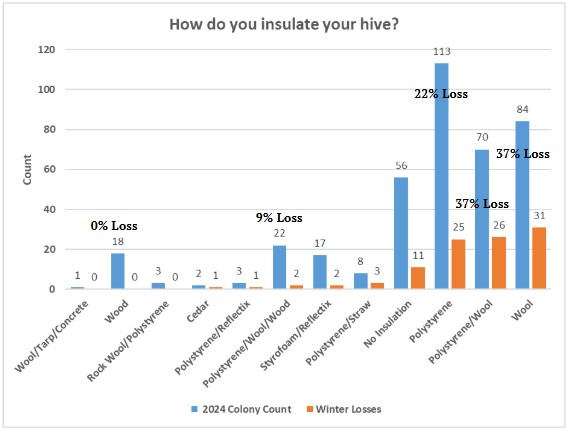
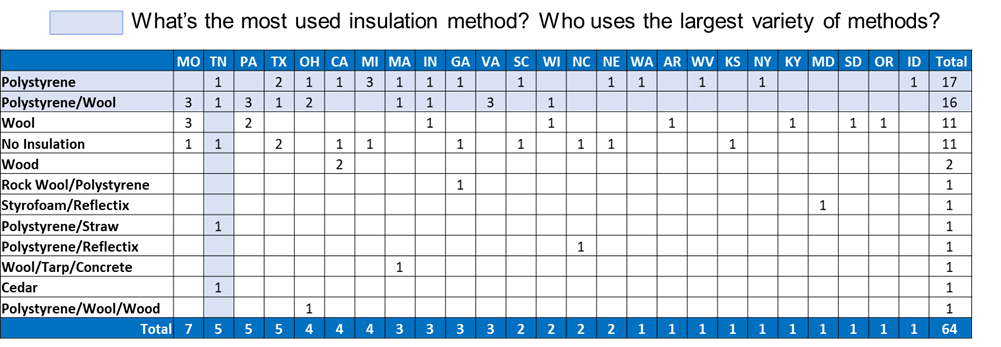
Take Away
- Most losses happened to those who don’t feed or treat.
- The loss rate was well within what would be considered normal or acceptable annually.
- Most losses were attributed to small or weak colonies by beekeepers. Only one was attributed to Varroa. This belief might be impacted by their management approach. Most commercial beekeepers who treat associated this year’s losses to varroa, pesticides, and loss of foraging.
- Losses were not extreme enough to suggest modifying the beekeepers’ current winter management approach.
- Most beekeepers reported collecting swarms and keeping local bees.
- A “no treat or feed” management style is certainly a priority for this community of beekeepers.
- Insulation is regularly used with Polystyrene and Wool being a preferred solution.
Suggestions
- Increase lid insulation. Double the lid insulation compared to your walls R-value.
- Go into winter with larger colonies. Combine small or weak colonies before going into winter.
Survey Part 2 (May 2025)
Part 2 will focus on your apiary conditions, where you are getting or collecting your bees, methods you use, and splitting.
Basically, where are you keeping your bees and how are you maintaining and possibly expanding your apiary.
- Apiary setting and conditions
- Foraging and Water
- Bee Sources – Swarms, Splits, Purchase
- Splitting Methods and Recombining
